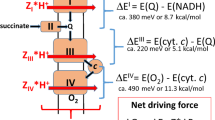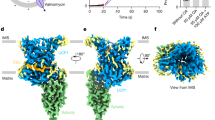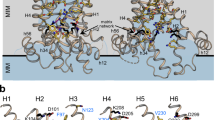Abstract
THE soluble adenosine triphosphatase (ATPase) from mitochondria1–3 is activated by several bivalent metal ions, and the pattern of activation is essentially the same whether the enzyme is acting on ATP (Fig. 1) or ITP (Fig. 2). It is clear that the ionic radius is the chief factor determining the ability of a bivalent ion to activate this enzyme. This indicates that ligand field effects are unimportant and that the metal ion remains in a coordination field similar to that of the aquo-ion, that is, an octahedral system which does not involve coordination to any high or low field ligands. In the range from Mg2+ to Ca2+ the only ion which fails to activate the enzyme is Cu2+. This is not because Cu2+ ions have a secondary effect as inhibitors, as 2.5 mM Cu2+ ions produce only 45 per cent inhibition in the Mg2+ activated system, which is compatible with competition between the ATP-Mg2+ complex and an inactive ATP-Cu2+ complex, but not with the total inhibition by Cu2+ ions which would be necessary to mask any activation they produced. Cu2+ may fail to activate because it does not form regular octahedral complexes.
This is a preview of subscription content, access via your institution
Access options
Subscribe to this journal
Receive 51 print issues and online access
$199.00 per year
only $3.90 per issue
Buy this article
- Purchase on Springer Link
- Instant access to full article PDF
Prices may be subject to local taxes which are calculated during checkout
Similar content being viewed by others
References
Pullman, M. E., Penefsky, H. S., Datta, A., and Racker, E., J. Biol. Chem., 235, 3322 (1960).
Selwyn, M. J., Biochem. J., 84, 62P (1962).
Selwyn, M. J., Biochem. J., 105, 279 (1967).
Caffrey, R. W., Tremblay, R., Gabrio, B. W., and Huennekens, F. M., J. Biol. Chem., 223, 1 (1956).
Bamann, E., Fischler, F., and Trapmann, H., Biochem. Z., 325, 413 (1954).
Bamann, E., and Trapmann, H., Adv. Enzymol., 21, 169 (1959).
Bowen, W. J., and Kerwin, T. D., Proc. Soc. Exp. Biol. and Med., 88, 515 (1955).
Butcher, W. W., and Westheimer, F. H., J. Amer. Chem. Soc., 77, 2420 (1955).
Burton, K., Biochem. J., 71, 388 (1959).
Tetas, M., and Lowenstein, J. M., Biochemistry, 2, 350 (1963).
Liébecq, C., and Jacquemotte-Louis, M., Bull. Soc. Chim. Biol., 40, 67 (1958).
Cohn, M., Biochemistry, 2, 623 (1963).
Ahrens, L. H., Geochim. Cosmochim. Acta, 2, 155 (1952).
Fiske, C. H., and Subbarow, Y., J. Biol. Chem., 66, 375 (1925).
Author information
Authors and Affiliations
Rights and permissions
About this article
Cite this article
SELWYN, M. Model Reaction for Mitochondrial Adenosine Triphosphatase. Nature 219, 490–493 (1968). https://doi.org/10.1038/219490a0
Received:
Revised:
Issue Date:
DOI: https://doi.org/10.1038/219490a0
This article is cited by
-
Mitochondrial adenosine triphosphatase ofPenetrocephalus ganapatii (Cestoda: Pseudophyllidea) in relation to activators and inhibitors
Proceedings: Animal Sciences (1989)
-
ATPases: Common and unique features within a group of enzymes
Folia Microbiologica (1982)
-
Mitochondrial oxidative phosphorylation at Site I involving a fatty aldehyde/acid couple
Journal of Bioenergetics (1972)
Comments
By submitting a comment you agree to abide by our Terms and Community Guidelines. If you find something abusive or that does not comply with our terms or guidelines please flag it as inappropriate.



